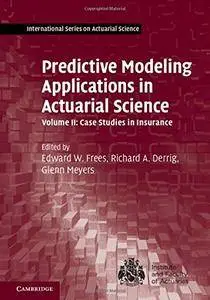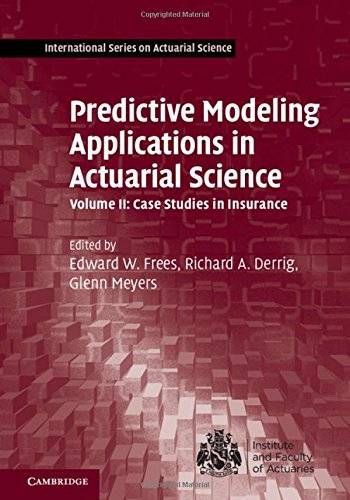Predictive Modeling Applications in Actuarial Science: Volume 2, Case Studies in Insurance
Cambridge | English | August 2016 | ISBN-10: 1107029880 | 330 pages | PDF | 6.89 mb
Cambridge | English | August 2016 | ISBN-10: 1107029880 | 330 pages | PDF | 6.89 mb
Edited by Edward W. Frees, University of Wisconsin, Madison , Glenn Meyers, ISO Innovative Analytics, New Jersey , Richard A. Derrig, Temple University, Philadelphia
Book description
Predictive modeling uses data to forecast future events. It exploits relationships between explanatory variables and the predicted variables from past occurrences to predict future outcomes. Forecasting financial events is a core skill that actuaries routinely apply in insurance and other risk-management applications. Predictive Modeling Applications in Actuarial Science emphasizes life-long learning by developing tools in an insurance context, providing the relevant actuarial applications, and introducing advanced statistical techniques that can be used to gain a competitive advantage in situations with complex data. Volume 2 examines applications of predictive modeling. Where Volume 1 developed the foundations of predictive modeling, Volume 2 explores practical uses for techniques, focusing on property and casualty insurance. Readers are exposed to a variety of techniques in concrete, real-life contexts that demonstrate their value and the overall value of predictive modeling, for seasoned practicing analysts as well as those just starting out.
Reviews
Praise for Volume 1:‘With contributions coming from a wide variety of researchers, professors, and actuaries - including several CAS Fellows - it's clear that this book will be valuable for any actuary whose main concern is using predictive modeling in his or her own work.'
David Zornek Source: Actuarial Review



